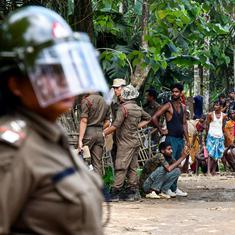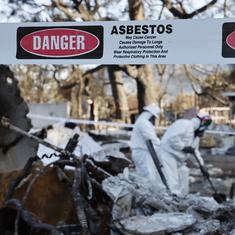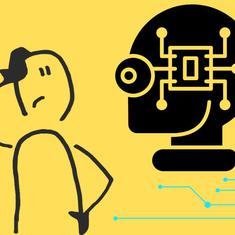It was only after he had become chief minister of Gujarat in October 2001 that Narendra Modi contested an election for the first time in his life. Yet, Modi was apparently still such a political lightweight that his victory margin was half that of his Bharatiya Janata Party colleague who had vacated a “safe seat” for the by-election. Within a week of this unimpressive electoral debut, the Godhra tragedy occurred on February 27, 2002, setting off a chain of events that ultimately propelled him to the office of prime minister.
Following his “spot assessment of the situation” in which 59 people had been burnt alive in a train, a press release issued by the Gujarat government the same evening quoted Modi as saying that Godhra was a “preplanned inhuman collective violent act of terrorism”. The casualties were mostly kar sevaks returning in the Sabarmati Express from a controversial Ram temple campaign launched in Ayodhya by the Vishwa Hindu Parishad in defiance of a Supreme Court order.
Modi’s immediate attribution of the train burning to a terrorist conspiracy was a politically fraught move. It turned the tables on Opposition MPs who had repeatedly disrupted Parliament the previous day demanding action against the Ayodhya campaign for exacerbating communal tension in the country. The resolve he apparently displayed in dealing with Godhra, the “original sin” of the 2002 Gujarat violence, has served to build Modi’s image as a strong and decisive leader.
A face-saver
But then, following the scrapping of the terror law by the Manmohan Singh government in 2004, a statutory committee recommended that it need not be applied to the Godhra case. The miscreants, it reasoned, had not used any firearms or explosives and that they had attacked the train from only one side and allowed passengers and kar sevaks to escape from the other side. Once the Gujarat High Court endorsed the committee’s recommendation, a special court set up in the Sabarmati jail in Ahmedabad began the trial in 2009.
Despite the withdrawal of the terror charge, the trial court, in its judgment delivered in 2011, upheld the conspiracy charge. Given the magnitude of the retaliatory violence in which over 1,000 people had perished, it was a face-saver for the Modi regime to receive a judicial imprimatur for its claim that the Godhra carnage was a premeditated crime. The finding was in the face of all the evidence suggesting that the train burning was the outcome of a group clash at the railway station located next to a Muslim ghetto.
Overcoming the odds stacked against the conspiracy charge, the trial court convicted 31 out of 94 accused persons. Unlike their Hindu counterparts in the post-Godhra massacre cases, who had generally been granted bail sooner than later, most of those found innocent in the Godhra case had languished behind bars for periods ranging up to nine years.
The acquittal of 63 persons and other aspects of the verdict laid bare, however unwittingly, the lengths to which the Gujarat police – and later, even the Supreme Court-appointed special investigation team – had gone to uphold Modi’s narrative. The appeals against the trial court judgment are pending before the Gujarat high court.
On the 15th anniversary of the Godhra train burning on Monday, here is a recap of little-known anomalies in the case that changed the course of India’s history, the anomalies that betrayed a shockingly cavalier attitude in the investigation of the alleged terror conspiracy, the anomalies that put in perspective some of the controversies surrounding the current dispensation at the Centre.
Contaminating the forensic evidence
Despite the allegations of arson and terror, the police did not call forensic experts for a physical examination of the burnt railway coach for two whole months even as it was freely accessible to the public from day one. If the arson was the result of a terror conspiracy, as made out by Modi on day one, it was all the more a reason to give top priority to forensic evidence. In any case, the police were legally required to preserve the scene of the crime – especially coach S6 where the bodies had been found – until the arrival of forensic experts.
Yet, right from the first day, the police did not stop the public from entering the coach and exploring the devastation. When a fact-finding team of the Editors Guild of India visited the Godhra railway station on April 3, 2002, they were
“surprised to see this prime exhibit standing in the yard unguarded and stray people entering it at will. Anyone could remove or plant anything in the carriage, tampering with whatever evidence it has to offer with none being any the wiser”.
It was only on April 28, 2002 that the police for the first time requested any forensic experts to make a physical inspection of the coach. That’s how a team from the Ahmedabad-based Forensic Science Laboratory made their maiden visit to the spot on May 1, 2002, two months after the mass crime. The outcome of this belated inspection conducted in such dubious circumstances was a simulation experiment, which apparently indicated that the coach caught fire after petrol had been thrown from inside it. After another couple of months, the Forensic Science Laboratory conducted further tests on the coach, displaying little concern about the contamination of the forensic evidence. This was to corroborate the theory floated by then by the police that the arsonists had entered the coach by cutting the canvas vestibule and breaking the sliding door.

Rejected nationalist testimonies
The testimonies of all the nine Vishwa Hindu Parishad members produced to advance the Modi line that Godhra Muslims had attacked the train without any provocation were rejected by the trial court. These nine VHP members from Godhra were produced by the prosecution as independent eyewitnesses to parrot a nationalist story: that they had all gone to the railway station as early as 6 am, armed with garlands and food packets, to greet the kar sevaks returning from Ayodhya. But when they were cross-examined by the defence counsel, the VHP witnesses had no answer as to how they could possibly have planned such a reception given that the Sabarmati Express was originally due to arrive much earlier, at 2.55 am. Such an unearthly hour could only have been, as the trial court said in its verdict,
“for peaceful sleeping journey, and can never be accepted as a proper time for welcoming or offering tea-snacks to kar sevaks and thereby to create disturbance to kar sevaks themselves, as also to other passengers”.
Even otherwise, the VHP witnesses had no explanation for the timing of their visit given that they were unaware of the five-hour delay in the running of the train. Nor was there any corroborative evidence of their visit. Though they claimed to have garlanded kar sevaks and handed over food packets, none of the kar sevaks testified to have received any such treatment at the station. Neither kar sevaks nor other witnesses, including officials on duty, vouched for the presence of any of those VHP members.
Another key issue that damaged the credibility of the VHP witnesses in the eyes of the trial court was their “ignorance” of the clash between kar sevaks and Muslim hawkers on the platform. They were clueless about the evidence accepted by the trial court relating to disputes over payments and the attempts by kar sevaks to make Muslim hawkers shout Hindu slogans and to molest Muslim women.
Having found every one of the VHP witnesses “unreliable”, the trial court said that it was left with no option
“except to discard their evidence in totality with regard to their presence at the time of the incident, at or near the place of occurrence and about witnessing of the incident as narrated by them”.
As a corollary, the trial court acquitted over 30 Muslims named by VHP witnesses as members of the mob that had attacked the train. One such Muslim who had by then been incarcerated for nine years on the basis of this trumped up evidence was Mohammad Kalota, who was the president of the Godhra municipality at the time of the train-burning.
All initial arrests found wrongful
All the 28 Muslims arrested within 24 hours of the train burning –and before the eruption of the post-Godhra violence – were found to have been framed. To the Gujarat police, what was more damaging than the collapse of all the VHP witnesses was the exoneration of all the 28 Muslims arrested at the outset in the Godhra case. For the charges against these 28 accused persons had been based mainly on the testimonies given by policemen themselves.
They happened to be arrested in two batches: 15 on the first day and 13 the next morning. The 15 picked up on February 27, 2002 were claimed to have been arrested “from the spot”, at 9.15 am. Out of the 94 tried in all the Godhra cases, the evidence against 14 of the 15 arrested on the first day (one having died before the trial) should, therefore, have been the strongest. After all, those caught red-handed normally stood the least chance of getting away with the crime. If the Godhra case deviated from such a logical pattern, it was because of the sheer implausibility of the alleged timing and location of those arrests.
In a bid to reconcile their own contradictory records, the police claimed that after they had been nabbed on the spot, those 15 Muslims were detained for three hours in that “very tense” atmosphere at the very place where rescue operations were going on in the vicinity of the Godhra railway station. None of the eyewitnesses, including officials, corroborated this improbable police claim. The trial court concluded that those 15 were more likely to have been picked up from their homes that evening in the course of a “combing operation”. Similarly, it rejected the testimonies of the same police witnesses claiming that 13 more arrests had been made the next morning, at 9.30 am, allegedly because those persons had been “noticed” in the mob that had attacked the train. The launch of the Godhra investigation with such 28 false arrests was a measure of the prejudice likely to have been caused by Modi’s outright branding of the incident as a terror attack.

‘Framed for embarrassing Modi’?
The mastermind who had allegedly ordered the burning of coach S6 was acquitted after eight years of incarceration, leaving a gaping hole in the conspiracy story. Maulvi Hussain Ibrahim Umarji was an unlikely person to be involved in the Godhra violence, let alone masterminding it. For he was the only community leader in Godhra to have been trusted by the district administration to run a relief camp in the wake of the 2002 anti-Muslim riots. He participated in peace meetings called by the district collector and apologised on behalf of Muslims for the train-burning. Still, Umarji was arrested early one morning in February 2003, in a high-security operation, following a confession by a co-accused.
In his bail application to the Supreme Court, Umarji alleged that he had been framed for embarrassing Modi during Prime Minister Vajpayee’s visit to Godhra in April 2002. He had given a representation to Vajpayee on the alleged persecution of Muslims in Godhra. When Vajpayee had asked him to elaborate, Umarji pointed to Modi and said sarcastically that he would not “know better”. However, having failed to obtain bail from any of the courts, he secured freedom only on his acquittal, after he had been detained for eight years.
The two grounds on which he was accused of plotting to burn the train were tenuous. One was that, under the guise of running the relief camp for riot victims, he gave financial aid to those accused of arson. The trial court pointed out that the allegation pertained to “subsequent help” and that it was “to some extent hearsay”. The other allegation was that in a meeting called at his instance on the eve of the crime, one of the conspirators conveyed a message from Umarji ordering them specifically to burn coach S6. The prosecution gave no explanation for why he had allegedly targeted coach S6 and why he was himself not in the meeting allegedly held in a guest house near the railway station. Worse, as the trial court said, “Except the bare words alleged to have been told by co-accused Bilal Haji, [there was] no other supporting evidence against this accused.”
Thanks to the exoneration of the alleged mastermind, there was a vital gap in the chain of events. If the meeting had actually not been called at Umarji’s instance to convey his deadly message, then what was the alternative explanation for it? Since there was none, the trial court simply said: “Conspiracy came to be hatched on the previous day ie 26-2-2002 during the meeting held in Aman Guest House between the conspirators ...”

Why no eyewitness to petrol being splashed?
None of the authorised passengers and kar sevaks traveling in S6 corroborated the prosecution’s claim that the arsonists had broken into the coach and splashed petrol from 20-litre cans. They testified to have neither seen nor physically felt any petrol in the overcrowded coach. Making light of this infirmity in the prosecution’s account, the trial court said:
“Admittedly, at the time of the incident (around 8 am), all the doors and windows of the entire train were closed because of the tense atmosphere and the passengers were not in a position to see or identify the assailants and that too, unknown assailants.”
The judgment was walking a fine line as the issue was not so much of identifying the assailants. The real gap in evidence, which remained unaddressed, was that nobody inside the coach had seen or felt anybody break open the door and splash petrol.
Why impunity for those who halted the train?
The two Muslims who had allegedly halted the train twice near the Godhra station as part of the conspiracy to burn it were produced not as accused persons but, ironically, as prosecution witnesses. And when Iliyas Mulla and Anwar Kalander had turned hostile during the trial, the court relied upon their pretrial testimonies recorded before a magistrate. Had their contention that their testimonies had been extracted under torture been accepted, another crucial link in the chain of events constructed by the prosecution would have gone missing. It’s not unusual though for a retracted testimony to be relied upon. What remains a mystery is the compulsion of the prosecution to have never arraigned the two persons who had been ascribed such a pivotal role in the execution of the alleged plot.
Manoj Mitta is the author of The Fiction of Fact-Finding: Modi and Godhra and co-author of When a Tree Shook Delhi: The 1984 Carnage and its Aftermath.










